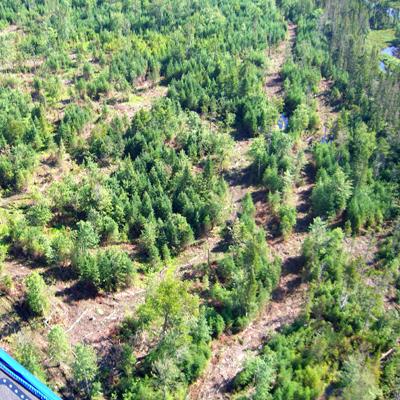Economic Benefits of Biodiversity and Heterogeneity: Does Managing for Mixtures of Tree Species and Variation in Canopy Structure Result in Higher Sustained Yield?

Forestry in the northeastern U.S. has shifted away from even-aged management and clearcutting to all-aged management and partial harvesting. Landowners and foresters face complex tradeoffs in maintaining a diverse forest stand composition and structure, while still providing economically sustainable timber yields. Add to that the explosion of interest in management of northern forests for biofuel production and carbon storage.
Research indicates that greater tree species diversity, particularly specific mixtures of species in local groups within stands, can produce higher timber yields than less diverse forests. NSRC researchers used long-term data from the U.S. Forest Service Forest Inventory and Analysis (FIA) plots and a computer model of forest dynamics to predict future effects on timber yield of managing for diversity within northern forests. They also explored how different methods and levels of forest harvest might affect carbon storage versus yield for biofuel production.
Researchers quantified the strength of the competition between the nine most common tree species (i.e. the effect of sugar maple on beech vs. the effect of beech on sugar maple or red oak). Surprisingly, many combinations of tree species had relatively weak competitive effects on each other. Stands containing mixtures of trees that had weak competitive interactions had higher rates of biomass production than stands composed of mixtures that had stronger competitive interactions. Partial harvesting appears to be the dominant form of logging in the four northern forest states, and the average harvest removes about 15-30% of aboveground adult tree biomass. Projections show significant continued potential carbon storage, under current harvest levels, for at least the next century.
Download printable version [PDF]
Download full final report [PDF]
